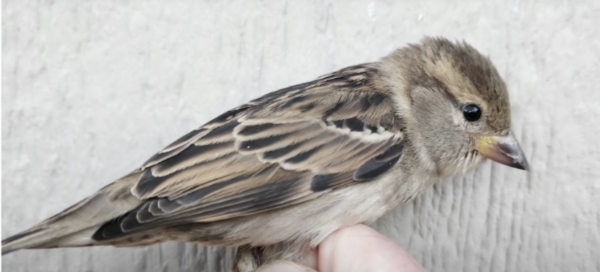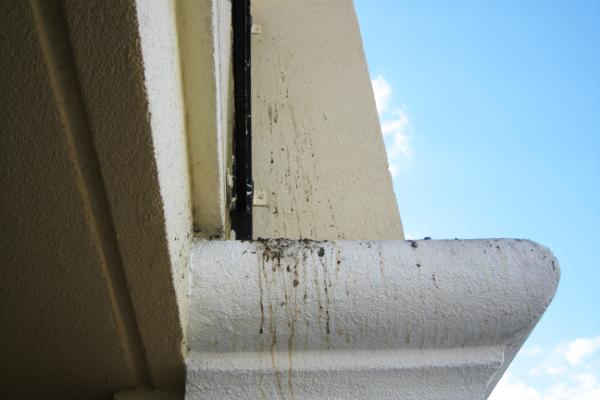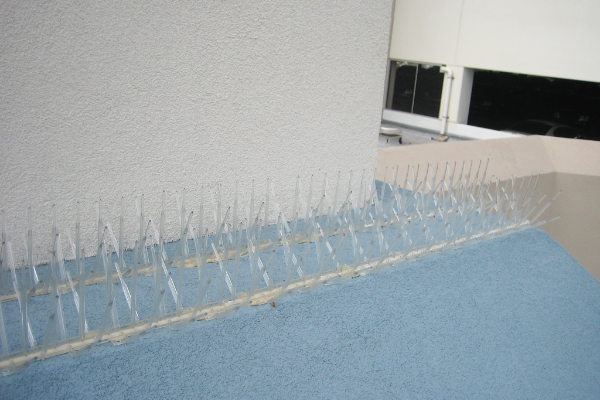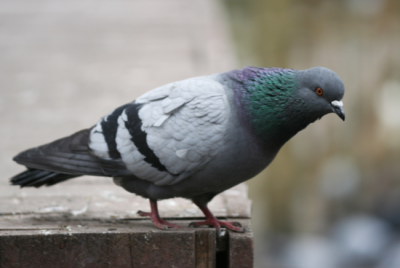Sparrows (House Sparrow) Removal and Control

House sparrows (Passer domesticus) are a common species of sparrows that can be found almost everywhere in the world. These birds can be said to have adapted to cohabiting with humans and are very commonly sited in metropolitan areas, and residential buildings. Even though they look small and harmless, they cause a lot of damage and can be a health threat to humans, animals, and even structures.
Problems Associated with House Sparrows
It is surprising to know that for relatively tiny and unimportant birds, they've been associated with 25 diseases that are harmful to humans and domestic animals. Also, it’s been reported that they harbor about 75 different species of ectoparasites, including mites and lice.
The feces of house sparrows are equally very destructive as they deface and foul structures, parks, outdoor tables, and stair railings. The uric acid in the feces can even damage automobile paints, so nothing is safe from damage by these birds.
They are quarrelsome and aggressive birds. They compete relentlessly with other desirable birds and displace them from their habitats like birdhouses, tree nests, or cages. They contaminate the feed and water of poultry and dairy animals, becoming a nuisance in farms by decreasing productivity, and incurring loss for farmers.
Unlike other sparrow species that build nests in fields, thickets, and trees, house sparrows prefer making nests in structures. They are opportunistic nesters and build nests in any opening or crevice they find. Mostly, they are seen in rooftops, damaging roofing and causing roof leaks. They make relatively heavy nests with dry plant materials, strings, and other extremely flammable matter, which makes them a high fire risk in residential areas.

It is necessary to control highly destructive pests while making it essential to protect animals and allow them to express innate behaviors. Also, specific measures should be put in place to minimize loss, enhance the care of birds like the house sparrow, and protect structures and other domestic and desirable birds.
Control Measures
Some tips that could be adopted in the control of house sparrows include:
Elimination of potential nesting sites: Since house sparrows enjoy nesting in house crevices and cavities of structures, make sure to cover any outside vents with appropriate coverings, and repair any damage in the roof. Also, life is made easy with modern-day innovations like bird spikes, which can be deployed on ledges or areas on structures that you think house sparrows would be attracted to. This is effective to help with the control of these birds.
Feed them: While this may sound like an odd way to control house sparrows, it’s not counter-intuitive. Offering a massive amount of cheap food to house sparrows, an all-time favorite like cracked corn is a strategy to draw them away from your other bird feeders. This is a win-win situation even though this adds to your expenses. Your birds are left undisturbed by house sparrows, and you don’t have to worry about contaminated water and feed, or the transmission of diseases to your farm. And the sparrows are sated and do not cause a nuisance on your farm.
Limiting diet: For your birds, you can select feeds and grains that the house sparrows do not particularly enjoy and hope that the sparrows will keep away. This has a very low probability of working because the sparrows are very adaptable feeders and can enjoy almost anything available.
Baths and water sources: Remove open water sources and birdbaths since the house sparrows easily come for a bath and drink, and are likely to bully your birds and contaminate the water source. Instead, you can use misters, drippers, or small hanging bird drink stations to provide water for your birds without attracting house sparrows.
Feeders: Every base must be covered to help control house sparrows, especially in farms, even bird feeders must be put into consideration. These birds are known to love feeding on the ground, flat and wide platforms; So, you have to provide the exact opposite for your birds on your farm. Tube feeders with short platforms are highly advised because they make it difficult for house sparrows to perch. The use of microfilaments on the feeders can also be useful to keep the house sparrows away from the feeders.
Biological control: This can be dangerous, but may become necessary to introduce bird eaters who are particularly attracted to house sparrows for food. This is a natural way to eliminate house sparrows from your farm and house. However, you need to be very careful to not bring birds that will prey on your domestic pet birds. That’s why you must know the bird of prey you are thinking of using and its feeding interests.
Introduce competition: House sparrows, although aggressive and known to move in packs, are just one species of sparrows. So, introduce other species of sparrows that are less harmful than house sparrows to your farm and residence, and by nature they will be driven away, saving you the work. Since other sparrows prefer fields and thickets, there will be a temporary inconvenience with high profits, making it worth the discomfort they might bring.
Use of scarecrows: This is helpful on farms, just as well as squirrel traps, to keep house sparrows out.
Aggressive control techniques: Other measures include the destruction of sparrow eggs, trapping of sparrows, and euthanasia (the humane killing of house sparrows, especially when they are causing severe damage and destruction of property and causing loss to farmers). Poisoning is not advised as it may be detrimental to farm birds and poultry.

Exclusion Using Repellents
House sparrow repellents are still being researched to produce repellents that have lasting effects as well as a low potential to cause harm. So far, there are:
Tactile gels that can be used on structures to prevent the roosting or perching of house sparrows, which ensure that they are not comfortable enough to build nests or lay eggs.
Hazing systems that spray irritants to create an uncomfortable environment for house sparrows and deter them from staying.
Using natural repellents that have been tested, such as anthraquinone and methyl anthranilate, have excellent results, and are still undergoing trials.
House sparrows are destructive for small birds, but with the ability to control them, humans can coexist with them, and with more research, they may even prove to be valuable in various ways.

